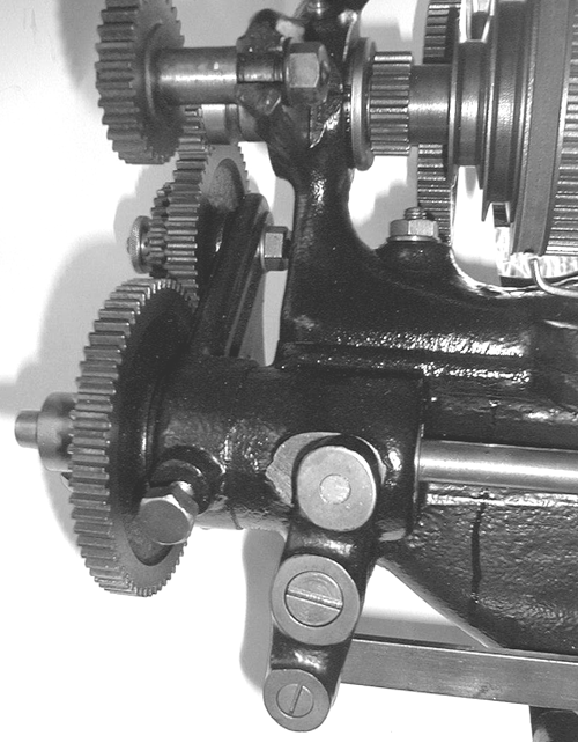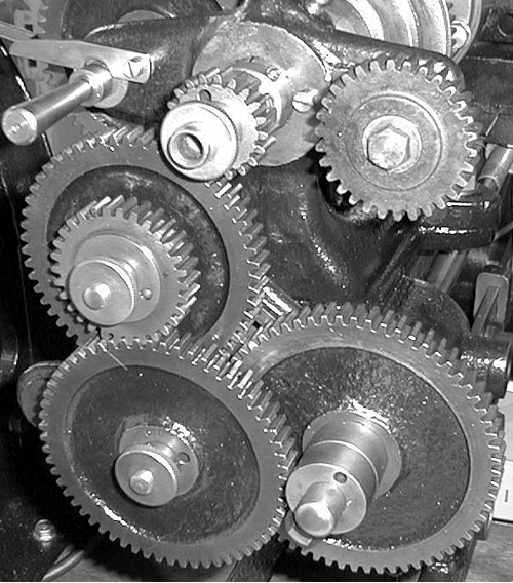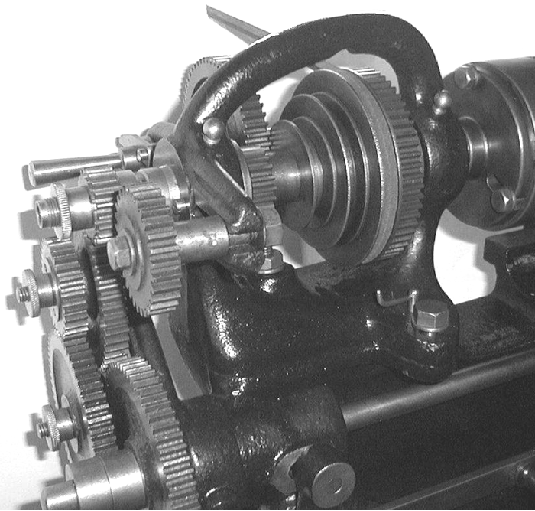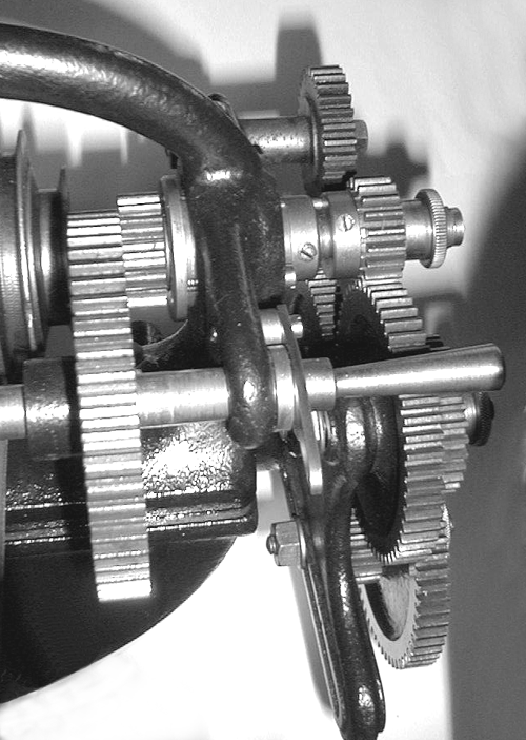Home Machine Tool Archive Machine-tools for Sale & Wanted
Books Accessories
Drummond B-Type Lathe 1912 - 1921
Literature for Drummond lathes, gear shapers
and other machine tools is available
Drummond Home Page





|
A bar, cast between the headstock bearings, aimed to improve rigidity and reduce tool chatter whilst the spindle-thread size was increased in size from 3/4" to 1". The headstock bearings lost their expensive-to-produce screwed-ring adjusters (though a similar design was reintroduced in 1921) - instead the bearings were drawn into their housing by thick washers pulled by a pair of screws passing through the casting. The headstock pulley was also modified being given with a deeper, flat-bottomed groove to accept a thicker round leather belt - usefully, this accepts a modern V belt of the narrow Z-section type. In the lathe above ball-topped plugs have been inserted into the headstock oil holes and are not original - but a jolly good idea, nonetheless. |

|
The "Mk. 2" B Type was fitted with a compound slide rest as standard and had a carriage of conventional design which carried a full nut on its apron. In anticipation of difficulties in getting the apron assembly to line up perfectly with the leadscrew the 'full-nut' was held in place by a large bronze nut, adjustable within a vertical slot. Although the single-grip crank handles were retained from the previous model the cross slide was now equipped with a zeroing micrometer dial. Unfortunately the gib-strip adjustment screws lacked locking nuts and, as a consequence, tended to work loose. |
||

|
Rear view of the compound slide. The two tapped holes in the back of the apron were used to mount a travelling steady. The central bolt in the apron retaining plate (below the tapped holes) was used to lock the carriage to the bed when parting off, or using a milling slide, etc. |
||

|
"Nylock" nuts on the bed plate show that this to be a modern photograph but otherwise, apart perhaps from the non-original (but correctly-shaped) striker bar for the automatic disengagement of the longitudinal feed, this is an entirely original lathe. |
||

|
The tailstock, like the rest of the lathe, was a completely new design. It was arranged to provide a positive location against the front inner vertical shear and was equipped with an eccentric locking shaft and permanently-fitted handle. |
||


|
One of the most useful features on the new model was the provision of a dog clutch, contained within a housing immediately below the left-hand end of the headstock. The mechanism could be set to automatically disengage the saddle drive at any point in its travel - but only so long as it was travelling towards the headstock. |
||

|
Instead of a single slot L-shaped "banjo" arm - that restricted the size of the reduction ratio possible between headstock and leadscrew - on the new lathe the changewheels were carried in a pair arms arranged in V formation. Unfortunately only a single locking bolt--passing through the arm, and pressing the mounting boss--was used, a situation not corrected until 1921 when a bolt-through bracket was added at the back. One of the few components interchangeable between the original and Mk. 2 versions of the B Type were the changewheels - in this picture arranged in pairs on common studs for a 'compound- reduction train' to give almost the finest feed possible. |
||

|
The single gear on a stud in the foreground occupies the slot used for introducing an extra gear into the train to cut left-hand threads. |
||

|
The elegant (but unnecessary) horn handle on the end of the backgear shaft was replaced by a sensible but prosaic steel component. |
||
Home Machine Tool Archive Machine-tools for Sale & Wanted
Books Accessories